Gschnitz - Habicht (običajna pot mimo Innsbrucker Hütte (Gschnitz))
Starting point: Gschnitz (1242 m)
| Lat/Lon: | 47,04252°N 11,34538°E |
| |
Name of path: običajna pot mimo Innsbrucker Hütte (Gschnitz)
Time of walking: 5 h 30 min
Difficulty: very difficult marked way
Altitude difference: 2035 m
Altitude difference po putu: 2035 m
Map: Brennerberge, 31/3 1:25.000; Outdooractive Stubai Wanderkarte
Recommended equipment (summer): helmet
Recommended equipment (winter): helmet, ice axe, crampons
Views: 501
 | 3 people like this post |
Access to the starting point:
From Ljubljana, take the motorway past Salzburg towards Munich. At the Dreieck Inntal multi-level junction, take the A93 towards Innsbruck/Kufstein/Brenner. On your return to Austria, continue to the Innsbruck-Mitte exit. Here, do not turn towards Innsbruck, but continue on the A13 motorway towards the Brenner Pass. Continue on the motorway until Matrei am Brenner, where you take exit 19-Matrei. Continue on the B182 to Steinach am Brenner, where you take the first exit at the roundabout in the middle of the town and continue on a slight uphill climb past Trins, through the picturesque Gschnitz valley to the eponymous sprawling village, where you will soon see a relatively small free parking lot behind the church, intended for visitors to the Innsbrucker Hütte.
An alternative is to drive through northern Itali: in this case, from central Slovenia, take the A2 motorway to one of the border crossings with Austria and continue to Lienz. Here you continue on the 100 road and pass the Prato alla Drava crossing into Itali. In Itali, follow the SS49 all the way to the junction with the A22 motorway in the direction of the Brenner Pass. After the pass, continue in the direction of Innsbruck, but only until you reach the exit for the B182 near the Brennersee. Continue on this road to Steinach am Brenner and from there follow the directions described above.
Path description:
From the parking lot, follow the clearly marked and marked, initially fenced path towards Innsbrucker Hütte, which soon begins to climb gently along the edge of the cultivated land. Above the village, the narrower path continues through sparse woodland, occasionally affording fine views of the picturesque Gschnitztal valley. For some time we climb moderately along a path that winds its way up the steep slopes of the Habicht Group. A little higher up, with increasingly fine views of the southern part of Stubai Alps, where the Pflerscher and Gschnitzer Tribulaun are particularly prominent, we pass into an open world of high mountain meadows. The path, which is in places somewhat precipitous, crosses the group to the west high above the valley in a wide arc below the walls of the Habicht peaks. Along the way, a few ravines are crossed, where a slightly more cautious step is required. In the last part of the way towards the hut, the path climbs again a little steeper to a grassy edge, beyond which you enter the high mountain world between the Habicht and Kalkwand walls, where you first see the Innsbrucker Hütte. Below the western edge of the Kalkwand massif, we descend slightly with the help of some fixed safety gear to the cross-route between the two massifs, where we are gradually joined by paths from the Feuerstein Inn and from the Stubai Valley. From here it is only a few dozen steps to the hut.
From Gschnitz it takes about 2. 30-3 hours to reach the Innsbrucker Hütte. The trail is not particularly difficult, but it is quite steep and in places a little precipitous, and in winter it is very prone to avalanches. The approach from the Feuerstein Inn is a little shorter and easier, but a little less scenic.
After the hut, continue along a winding track through a high mountain meadow, which soon turns into the relatively flat rocks of the side peak Habicht. Following a well-marked path over flat rocks, we climb up to a large cairn, from where we can clearly see the continuation of the path over the broad back of Habicht, and we also get a view of the attractive alpine lake of Alfaier below us. Descend slightly to the main building of Habicht and ascend moderately steeply to fixed safety gear, which helps you to cross the sharp rocks of the western flank of the mountain (difficult). After walking for about 10 minutes on a protected path, you find yourself above the edge of a high-mountain valley, into which steep ravines drop. After a short, more gentle ascent, we climb with the help of a rope ladder over flat rocks to a short side ridge Habicht, over which, with fine views towards the hut, the northern and eastern part of Stubai Alps and Zillertal Alps, we approach the summit building of the Habicht massif. Habicht is the summit building of the Habicht massif. Zillertal Alps is the summit building of the Zillertal Alps massif.
Continue along the path over the Habicht rock rib, where you will occasionally need to use your hands. After half an hour, a moderately steep climb leads us to a large platform below the summit, where we step onto the last remnants of the Habicht glacier. Snow is unavoidable here, even in high summer, but crossing the snowfield is relatively easy; given the popularity of the trail, we will always be guided by a clear trail in the high mountain season, and winter equipment is not usually needed then.
Above the glacier, follow the trail through the high mountain rocky world, which crosses to the west in a gentle ascent towards the clearly visible cross at the summit. Just below the summit, we approach the sometimes unpleasantly loose steel cables that will help us in the final part of the route. These are used to initially traverse airily over the precipitous slopes below the summit, before climbing steeply towards the large cross on the spacious summit, which rewards you for the climb with an extraordinary view.
With its relatively low difficulty, its grandeur and its magnificent views, the Habicht is one of the most popular of the Tyrolean triple peaks. The ascent by the normal route past the Innsbrucker Hütte falls near the lower end of the very difficult routes (technically speaking, it could even be classed as 'merely' difficult), although it is located in the otherwise still glacially intense Stubai Alps, it does not normally require the use of additional equipment, and the Innsbrucker Hütte offers us a good possibility of an overnight stay somewhere around the halfway point to the summit. Nevertheless, the climb is not to be underestimated: no matter where you start on Habicht, there are more than 2 000 metres of ascent and the paths are precipitous in places. Although the tour can be done in one day, I recommend a two-day trip, possibly including a visit to Lake Alfaier and the educational ferry near the hut, or climbing the nearby Kalkwand or Ilmspitze.

Pictures:
 1
1 2
2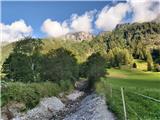 3
3 4
4 5
5 6
6 7
7 8
8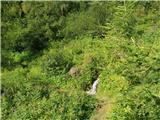 9
9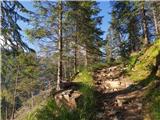 10
10 11
11 12
12 13
13 14
14 15
15 16
16 17
17 18
18 19
19 20
20 21
21 22
22 23
23 24
24 25
25 26
26 27
27 28
28 29
29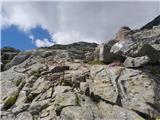 30
30 31
31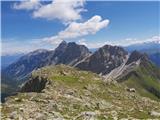 32
32 33
33 34
34 35
35 36
36 37
37 38
38 39
39 40
40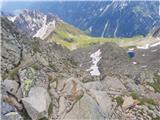 41
41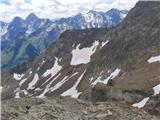 42
42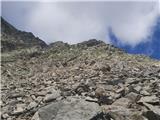 43
43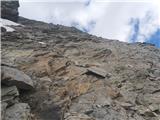 44
44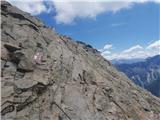 45
45 46
46 47
47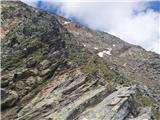 48
48 49
49 50
50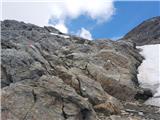 51
51 52
52 53
53 54
54 55
55 56
56 57
57 58
58 59
59 60
60 61
61 62
62
Discussion about the trail Gschnitz - Habicht (običajna pot mimo Innsbrucker Hütte (Gschnitz))